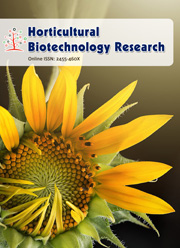Challenges Faced by Farmers in Crop Management Practices under Environmental and Soil Degradation
DOI:
https://doi.org/10.25081/hbr.2017.v3.3402Abstract
Crop farming is the key source of revenue (12%) as well as livelihood (45%) generation in Pakistan. Although it is the mainstay of national rural economy, there are certain factors impede its actual potential. Environment and soil degradation are the most significant among these factors. Therefore, it is dire need to mitigate their adverse impact on crop management to combat the food insecurity. The present study was conducted in mix cropping zone of Punjab. Through multistage sampling technique 120 farmers were selected and data were collected through interview schedule and focus group discussion. Psychoanalysis of data revealed that among environmental factors the rain variation has the most adverse effect on crop management followed by flood, temperature variation and hailstorm respectively. Qualitative data illustrated that from last few year’s variation in time & frequency of rainfall become fashion of the day due to usage of huge amount of ammunition in successive operations against terrorism and deforestation. The data showed that soil is degraded mainly by loss of fertility followed by water logging, erosion and salinity. The focus group discussions concluded that due to bulging of population, the cropping intensity increases which deplete the needed nutrients in the soil. Although farmers apply the fertilizers, application without soil testing is all in vain in-spite of increasing the cost of production. Therefore, it is recommended that strengthen the weather forecasting department and use all kinds of media to update the farmers about upcoming weather conditions.






 .
.